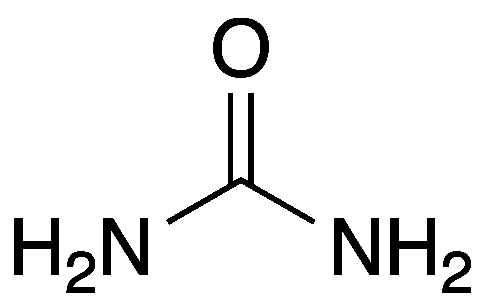Sulphur hexafluoride (SF6) is a colourless, odourless, non-toxic (except at extremely high temperatures), and non-flammable synthetic gas. Because it is heavier than air, it remains close to the ground upon release, which can result in death by suffocation in large quantities. The octahedral geometry of SF6 is made up of six fluorine atoms attached to a central sulfur atom. The sulfur hexafluoride formula is SF6.
Sulfur hexafluoride, also known as an inert gas, is a colourless, odourless, tasteless, non-toxic, and relatively unreactive gas. SF6 is a potent greenhouse gas with a high potential for global warming, and its concentration in the earth’s atmosphere is increasing at a rapid rate. SF6 decomposes under electrical stress during its working cycle, forming toxic byproducts that pose a health hazard to exposed workers.
SF6 gas is commercially produced by reacting fluorine (obtained through electrolysis) with sulfur. Other by-products such as SF4, SF2, S2F2, and S2F10 are produced in small amounts during the production of this gas.
Sulfur hexafluoride (SF6) is a relatively nontoxic gas used in a number of applications for its inert qualities. While SF6 is inert in normal use, toxic byproducts can be produced when electrical discharges occur within SF6-filled equipment, posing a threat to the health of workers who come into contact with them.
Because both elements (sulfur and fluorine) are nonmetals, the compound SF6 is molecular. When the compound is formed, the six valence electrons of sulfur are shared with six fluorine electrons.
The sulfur atom in sulfur hexafluoride is shielded by six fluorine atoms, which impede any kinetic reaction with water, alkali hydroxides, ammonia, or strong acids; as a result, it is inert to these reagents.
Table of Contents
Applications of Sulfur hexafluoride
- Used for plasma etching
- Carrier gas media in super critical fluid chromatography (SFC) and as a sample preparation media in fluid extraction (SFE).
- Applications as a filler in double glazing to reduce sound transmission
- Used in medicine as a contrast agent in ultrasound examinations and in retinal surgery
- Tracer gas to evaluate the efficiency of a ventilation system
Summary
- Sulfur hexafluoride is a nontoxic and long-lasting greenhouse gas which is primarily used as an electrical insulator and arc suppressant.
- The molecular geometry of SF6 is octahedrol with six fluorine atoms attached to a central sulfur atom.
Related Topics
Sulfur Electron Configuration
Sulfur trioxide (SO3)
Sulfur hexafluoride| Formula and Molecular Geometry
Fluoroantimonic acid-Super Acid
Difference Between Electronegativity and Electron Affinity
SO2 Lewis Structure| 4 Simple Steps
Frequently Asked Questions
1. What is molar mass of nitrogen?
Molar mass is the mass of an element in grams per mole of its atoms. It is equivalent to the element’s atomic mass in units of AMU (atomic mass units). The molar mass of Nitrogen is approximately 14.01 grams per mole of nitrogen atoms.
2. What is nitrogen trifluoride?
Nitrogen trifluoride is a gas that doesn’t have any colour. It has a mouldy smell. Because it is a source of Fluorine, it is used by the electronics industry and in high-power lasers. It is mostly used to make semiconductors and LCD (Liquid Crystal Display) panels, as well as some types of solar panels and chemical lasers, but not all of them. Unlike the fluorinated carbons, the nitrogen trifluoride is easy to break down because it has low bond energy in the N–F bond. This means it can be used as a source of fluorine.
3. What is hydrogen iodide?
Hydrogen iodide (HI) is a diatomic molecule and hydrogen halide. Aqueous solutions of HI are known as hydroiodic acid or hydriodic acid, a strong acid. It is used as a reducing agent and an analytical reagent. It is also used in the manufacturing of pharmaceuticals, disinfectants and other chemicals. It is supplied as a compressed, liquefied gas.
4. How cold is liquid nitrogen?
Liquid nitrogen (LN) is an inert cryogenic fluid with a temperature of − 196 °C [− 320 °F]. Liquid nitrogen is much colder than dry ice, which makes it more dangerous to handle. It can be between -346°F and -320.44°F. Because it’s a liquid and not a solid, it can be hard to work within many places and can be hard to keep under control.
5. how many valence electrons are in nitrogen?
Nitrogen is the seventh element with a total of 7 electrons. The last shell of nitrogen has five electrons. Therefore, the valence electrons of nitrogen are five.
6. h2s molecular geometry?
The molecular geometry of H2S is bent because the two lone pair electrons on the sulphur central atom repel each other and the electrons of the next two bonded pair electrons. As a result, these electron pairs (lone pair and bond pair) take the position where the repulsion is the least and they become stable (no further repulsion force exist in electrons pairs).
7. Hydrogen cyanide (HCN) is polar or nonpolar?
HCN, or hydrogen cyanide, is a polar molecule because there is a large electronegative difference between the N and H across the linear molecule. Carbon has an electronegativity of 2.5, Hydrogen has a value of 2.1, and Nitrogen has a value of 3. As a result of these differences, as the vector moves from Hydrogen to Nitrogen, Hydrogen will have slightly positive charges and Nitrogen will have slightly negative charges.
8. What is hydrogen molar mass?
The molar mass of hydrogen gas is 2.016 grams per mole.
A molar mass is the mass of 6.022 X 1023 atoms or molecules, depending on the basic unit being measured. This number produces a quantity of a substance in which the mass in grams is the same as the mass in atomic mass units of a single atom or molecule of the same substance.
Check another related topic “How many neutrons does hydrogen have?”.
More Intersting Topics
Sodium Sulfate- Miraculous salt
Fluoroantimonic acid-Super Acid
SO2 Polar or Nonpolar
O2 Molar Mass
Avogadro’s Number: Definition
Sulfurous Acid Formula & Lewis Structure
- BCl3 Lewis Structure in four simple steps - November 1, 2023
- PH3 Lewis Structure in four simple steps - October 8, 2023
- PF3 Lewis structure in four simple steps - September 24, 2023



